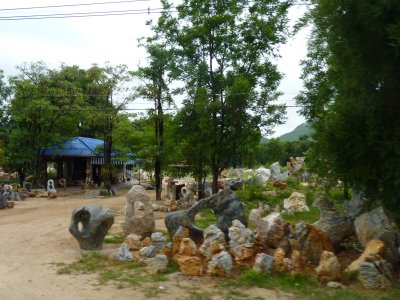
Some of them have appeared in roadside "rock shops". Presumably for garden ornaments.
We missed the photograph of the rocks that had been further sculpted and polished.
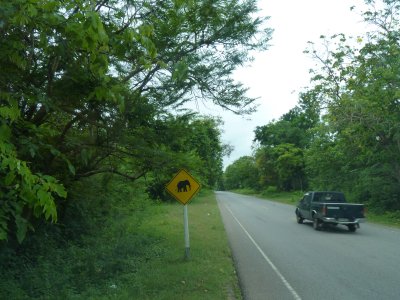
North West of Kanchanaburi on the way to Erewan National Park.
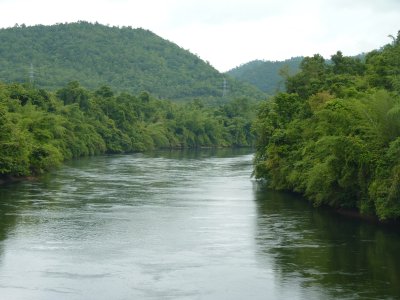
The camp site is downstream about 1km on the right.
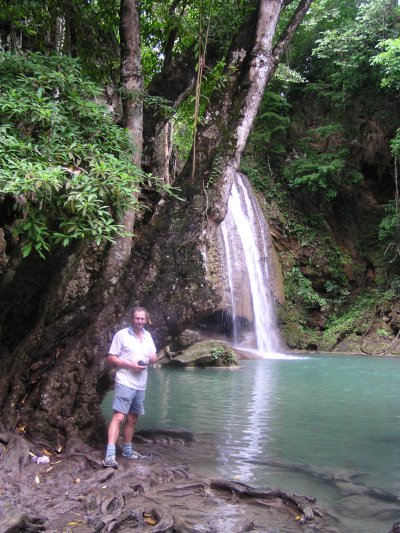
The colours were magic.
An overcast day, hot and sticky, the cool water was inviting.
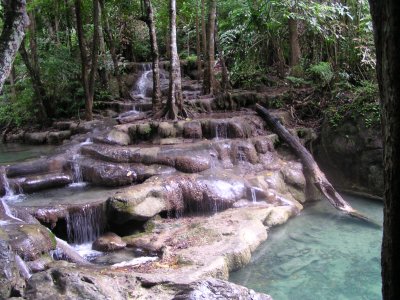
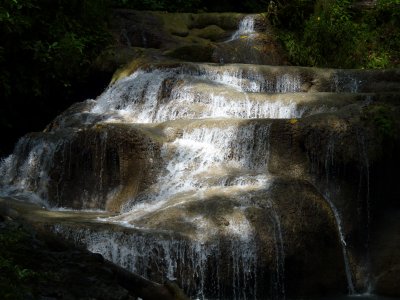
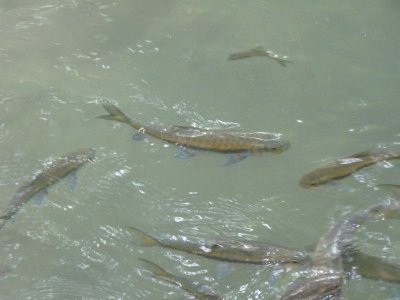
They weren't disturbed by people swimming.
We were camped near the falls and went back for an evening swim when the crowds had disappeared. Its quite a popular spot for both Thais and tourists (bus from Bangkok and Phuket).
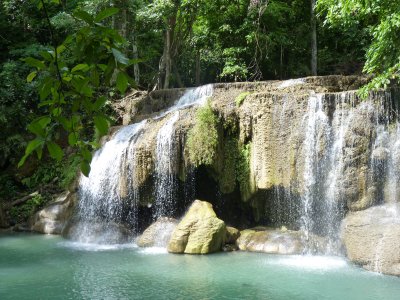
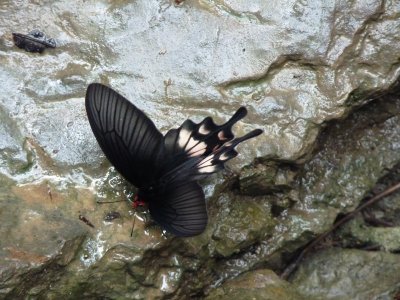
An odd shape we thought, but we aren't biologists.
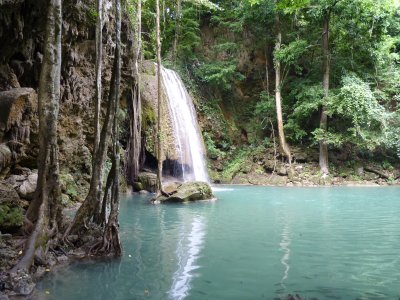
Getting nearer the top, about 1km of steep track, the formations were brighter.
The cascades are formed by salts depositing out of the water. Fairly typical of limestone country.
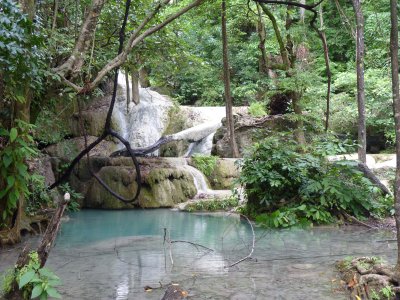
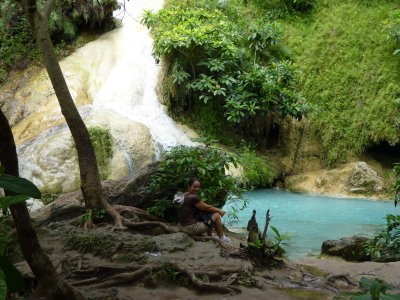
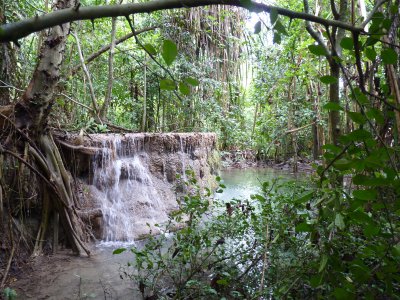
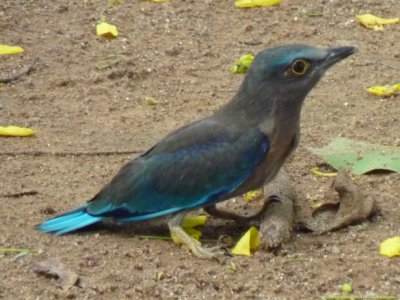
Beautiful iridescent blue on the tail and under the wings.
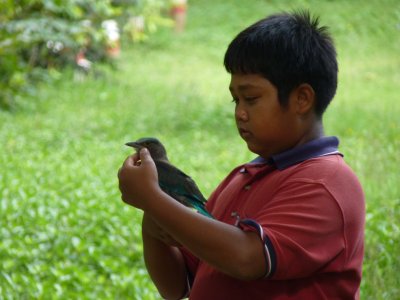
He later returned with younger boy. We guessed he'd been sent to get him for tea .....
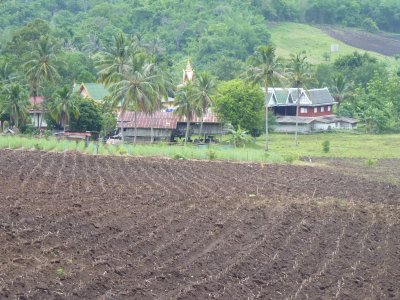
Edit:- it took us until the North of Cambodia to realise that it is possibly tapioca (casava). The beginning of the next crop.
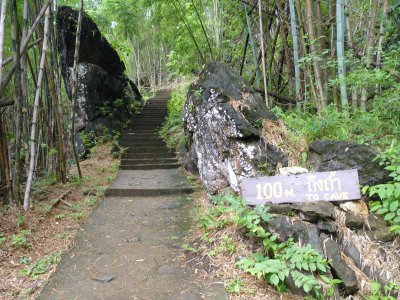
Haven't a clue what to expect but we hoped it was worth it as there were gazillions of steps in the 600m from the car park.
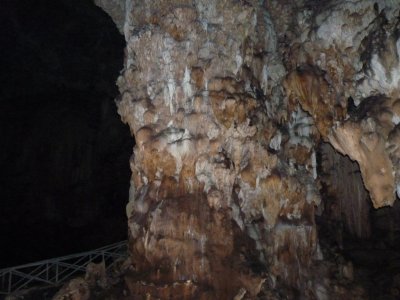
Through a very small entrance the cavern is as large as we've ever seen.
And the formations are also on a grand scale.
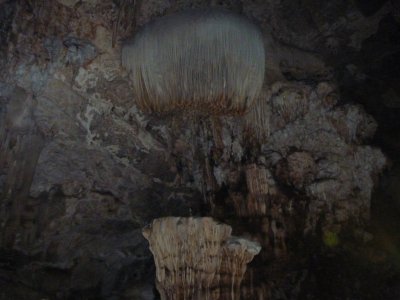
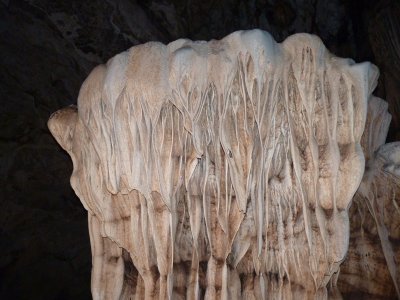
How on earth to describe how big this is. Dwarfed by the size of the cavern.
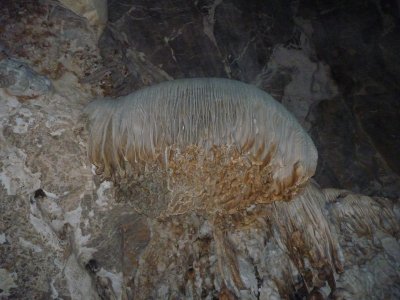
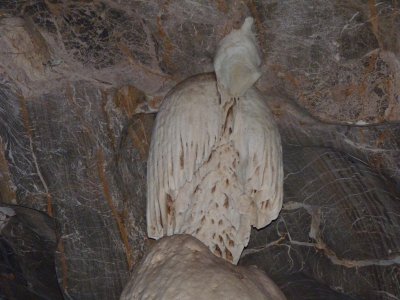
And the formations look like there is a considerable draught through the cave.
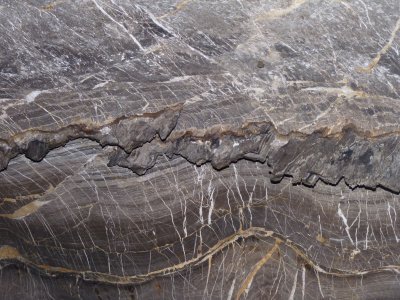
Our guide made much of this, but unfortunately we couldn't understand.
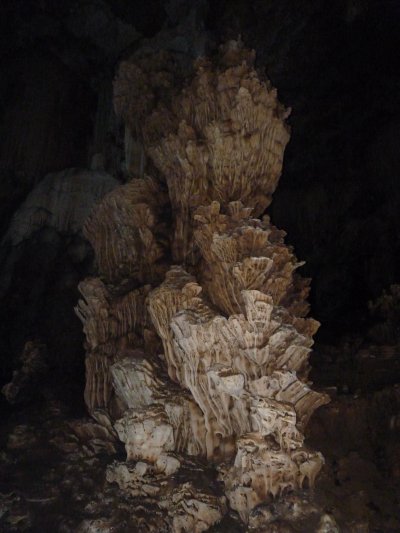
The flowers seem to grow upwards.
Its about 20m tall.
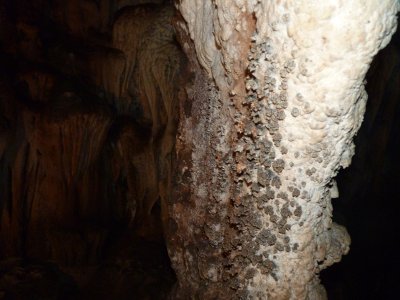
We believe an indication of air movement.
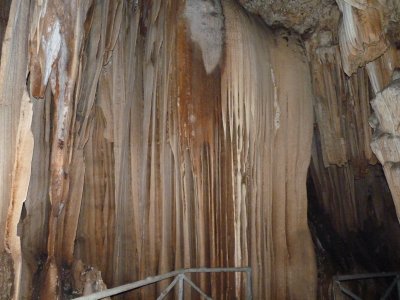
The cavern is probably a couple of hundred feet high. We walked a couple of hundred meters inside the same cavern.
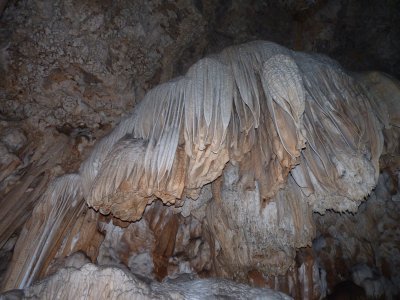
The entrance had been small. It seemed obvious to us that there must be quite a strong breeze through the cave to create the formations.
At the exit our guide (with very limited English) managed to confirm the breeze by showing us a couple more small ways in and waving arms to indicate the circular direction of air flow.
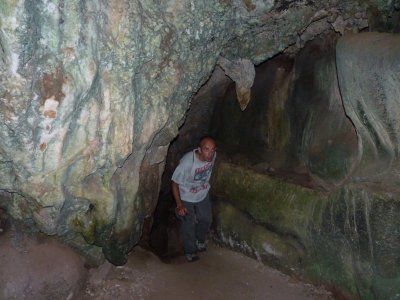
The previous evening we had a pleasant chat about life the universe and everything. He'd spent a month in Laos and now 2 months in Thailand. Hired a motorbike to get here and was tenting. We'll probably visit him in Northern Spain.
Like lots of people with protestations of their limited English (our Spanish is about zilch) he improved with time and patience.
He went to eat while we cooked some soup. We seem to eat out during the day then something simple, and liquid, at night.
A pleasant surprise when he returned with two ice creams.
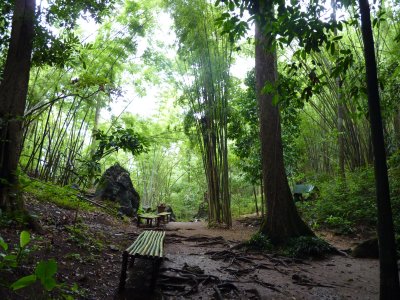
It was bamboo all the way. Apparently at some time in the past (possibly as long ago as 17th century with Burmese invasions) parts of the forest had been cleared and bamboo had taken over for quite large tracts.
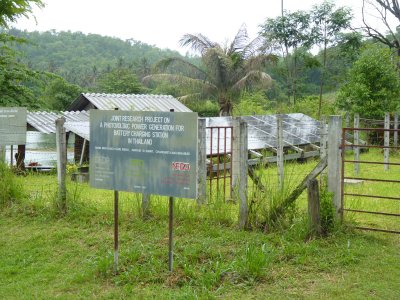
This was a 4Mw array with battery storage as a trial. Ironic that it was a stones throw from a substantial hydro dam.
Maybe there is hope of finding a new solar regulator in Thailand to replace our broken one after all. But we'll leave the plan to send one from Aus to our Chinese Agency for Susanna, our guide, to bring to the border.
Thanks to friend Dave in Brisbane for taking over organising that. It would have been fairly difficult with limited intermittent internet connection.
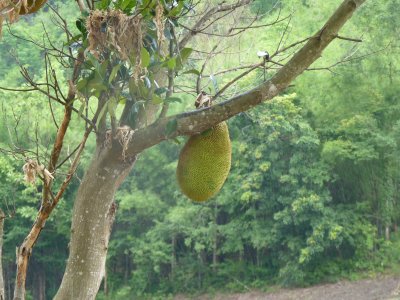
It just sort of hung there, outsize and incongruous, but firmly attached to the tree.
Edit:- thanks to friend Lawrie in Aus who reckons its Jack Fruit. As grown in North Queensland. We've later seen them for sale on roadside stalls in Cambodia.
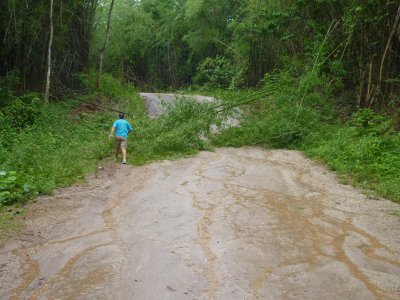
The fallen bamboo was a bonus. We passed a car coming the other way shortly before so I guess we were lucky it didn't fall on us.
It was easily pulled out of the way.
We used 4wd for most of the track, it got narrower nearer the cave and we explored a bit beyond. The really steep bits had concrete laid.
It was bumpy to say the least. Very little mud and few corrugations. Just lots of potholes. Not as slippery as it looked.